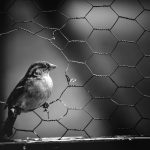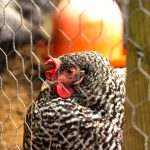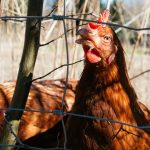Chickens are naturally curious and social animals with a strong instinct to forage for food. They are easily startled by sudden movements or loud noises. Understanding these behaviors is crucial for deterring them from certain areas.
Chickens are attracted to shiny objects, which can be used to implement visual deterrents such as reflective tape or scarecrows. They are also sensitive to certain smells, allowing the use of natural deterrents like citrus peels or vinegar to keep them away from specific areas. Understanding the pecking order within a flock is essential for managing chicken behavior.
Chickens have a hierarchical social structure, and identifying dominant chickens can help address behavioral issues within the flock. This knowledge enables better anticipation of their actions and implementation of effective deterrent strategies. Chickens are creatures of habit and tend to return to places where they have found food or shelter before.
This information can be used to create physical barriers or provide alternative distractions to steer them away from unwanted areas. By comprehending chicken behavior, it becomes possible to develop a comprehensive approach to deterring them from specific areas while ensuring their welfare and well-being.
Table of Contents
- 1 Creating Physical Barriers
- 2 Using Natural Deterrents
- 3 Implementing Visual Deterrents
- 4 Providing Alternative Distractions
- 5 Regular Maintenance and Monitoring
- 6 Seeking Professional Help if Necessary
- 7 FAQs
- 7.1 What are some effective ways to keep chickens out of flowers?
- 7.2 Why is it important to keep chickens out of flowers?
- 7.3 Are there any plants that can repel chickens from flower beds?
- 7.4 What are some natural deterrents that can be used to keep chickens out of flowers?
- 7.5 How can I train my chickens to stay away from the flower beds?
Key Takeaways
- Chickens are naturally curious and will explore their surroundings, so understanding their behavior is crucial in deterring them from unwanted areas.
- Physical barriers such as fences and netting can effectively keep chickens out of specific areas and protect gardens or crops.
- Natural deterrents like predator urine or strong-smelling plants can help keep chickens away from certain areas without causing harm to them.
- Visual deterrents such as scarecrows or reflective objects can startle chickens and discourage them from entering restricted areas.
- Providing alternative distractions like designated foraging areas or dust baths can redirect chickens’ attention away from areas where they are not wanted.
- Regular maintenance and monitoring of deterrent methods is important to ensure their effectiveness in keeping chickens away.
- Seeking professional help, such as consulting with a poultry expert or animal control, may be necessary if chickens continue to be a problem despite deterrent efforts.
Creating Physical Barriers
Implementing Physical Barriers
When implementing physical barriers, it is important to ensure that they are secure and tall enough to prevent chickens from flying over or squeezing through.
Alternative Methods
Another method of creating physical barriers is by using chicken wire or hardware cloth to cover the ground in areas where chickens are not wanted. This can prevent them from scratching and foraging in these areas, thus protecting plants and landscaping. Additionally, using barriers such as chicken wire can also protect vulnerable areas from being trampled by chickens.
Maintenance and Inspection
It is important to regularly inspect and maintain physical barriers to ensure their effectiveness. Over time, wear and tear can compromise the integrity of the barriers, allowing chickens to find their way through. By creating and maintaining physical barriers, it becomes possible to protect sensitive areas from the unwanted presence of chickens while ensuring their safety and well-being.
Using Natural Deterrents
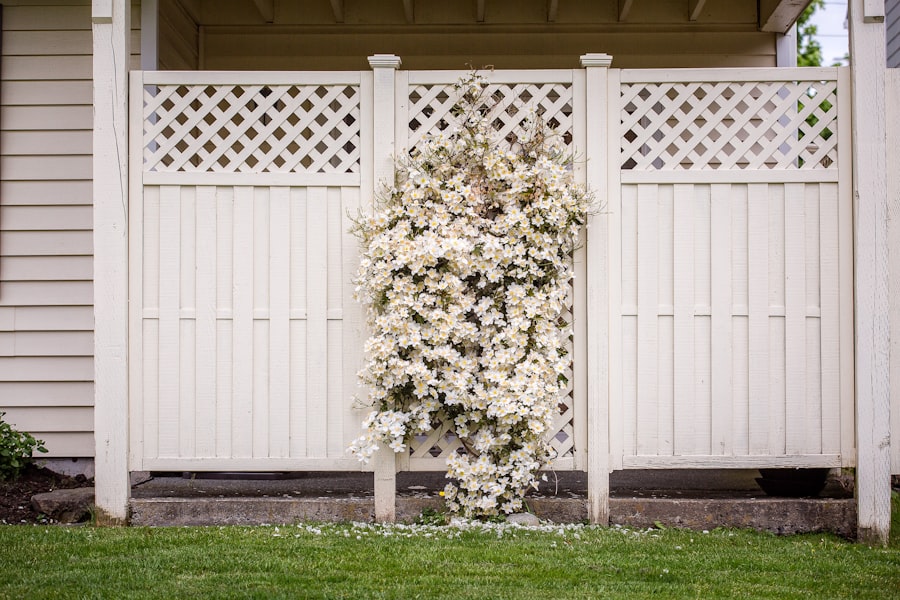
Natural deterrents can be an effective way to keep chickens away from specific areas without causing them harm. Chickens have a strong sense of smell, and certain scents can be used to deter them from accessing certain places. For example, citrus peels or vinegar can be placed in areas where chickens are not wanted, as the strong smell can discourage them from foraging in those areas.
Another natural deterrent is the use of certain plants that chickens find unappealing. For example, planting rosemary, lavender, or marigolds around sensitive areas can help deter chickens due to the strong scents these plants emit. Additionally, these plants can also serve as a natural barrier, making it more difficult for chickens to access these areas.
It is important to note that while natural deterrents can be effective, they may need to be reapplied regularly as the scent or effect wears off over time. Additionally, it is crucial to ensure that the natural deterrents used are safe for chickens and do not pose any health risks to them. By using natural deterrents, it becomes possible to keep chickens away from specific areas in a safe and environmentally friendly manner.
Implementing Visual Deterrents
Visual deterrents can be an effective way to deter chickens from accessing certain areas by exploiting their natural instincts and behaviors. Chickens are easily startled by sudden movements or loud noises, and this can be used to create visual deterrents that discourage them from entering specific places. For example, hanging shiny objects such as CDs or aluminum foil strips can create reflections and movements that startle chickens and deter them from approaching.
Another visual deterrent is the use of scarecrows or decoy predators such as owls or hawks. These visual cues can create the impression of danger for chickens, causing them to avoid these areas out of fear. Additionally, using visual deterrents such as brightly colored flags or streamers can create a visual barrier that discourages chickens from entering specific places.
It is important to regularly move and change visual deterrents to prevent chickens from becoming accustomed to them. Chickens are intelligent animals and can quickly adapt to visual cues that they perceive as harmless. By implementing visual deterrents, it becomes possible to discourage chickens from accessing specific areas while ensuring their safety and well-being.
Providing Alternative Distractions
One effective way to deter chickens from unwanted areas is by providing alternative distractions that capture their attention and redirect their behavior. Chickens are naturally curious and easily distracted by new stimuli, and this can be used to steer them away from sensitive areas. For example, scattering scratch grains or treats in designated areas can encourage chickens to forage and scratch in those places instead of where they are not wanted.
Another method of providing alternative distractions is by introducing new toys or objects that stimulate the chickens’ natural behaviors. For example, hanging cabbage or other vegetables on a string can provide entertainment for chickens and keep them occupied in designated areas. Additionally, introducing new perches or structures for chickens to explore can also redirect their attention away from sensitive areas.
It is important to regularly rotate and introduce new distractions to prevent chickens from becoming bored or disinterested. By providing alternative distractions, it becomes possible to redirect the behavior of chickens away from unwanted areas while ensuring their mental and physical well-being.
Regular Maintenance and Monitoring
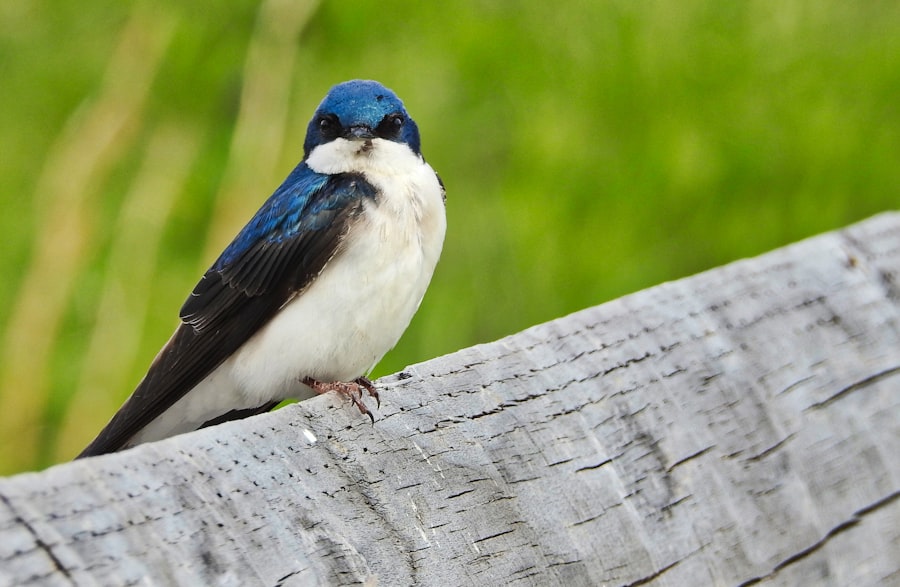
Inspecting Deterrents
Regular inspections of physical barriers, natural deterrents, visual deterrents, and alternative distractions are necessary to ensure they remain effective in deterring chickens from specific areas. This may involve repairing damaged fencing, replenishing natural deterrents, or repositioning visual cues.
Monitoring Chicken Behavior
Monitoring the behavior of the chickens is vital in identifying any changes or patterns that may require adjustments to the deterrent strategies. By observing the behavior of the flock, it becomes possible to assess the effectiveness of the deterrent measures and make any necessary modifications.
Maintaining a Clean Environment
Regular maintenance and monitoring also involve keeping the environment clean and free of potential attractants for chickens. This includes promptly cleaning up spilled feed or water, removing fallen fruits or vegetables, and securing trash or compost bins to prevent access by chickens. By maintaining a clean environment and monitoring the behavior of the flock, it becomes possible to effectively deter chickens from unwanted areas while promoting their health and well-being.
Seeking Professional Help if Necessary
In some cases, deterring chickens from specific areas may require professional assistance, especially if the behavior of the flock poses a significant challenge or risk. Professional help may be sought from animal behaviorists, poultry experts, or pest control professionals who have experience in managing chicken behavior and implementing effective deterrent strategies. Professional help may also be necessary if there are underlying issues within the flock that contribute to their unwanted behavior.
This may include addressing aggression within the flock, managing overcrowding in coops or runs, or addressing nutritional deficiencies that may lead to destructive behavior. Additionally, seeking professional help may be necessary if there are legal considerations or regulations that need to be taken into account when deterring chickens from specific areas. For example, in urban or suburban settings, there may be local ordinances or zoning regulations that govern the keeping and management of chickens.
By seeking professional help when necessary, it becomes possible to address challenging behavior issues within a flock and implement effective deterrent strategies that promote the well-being of both the chickens and the surrounding environment. In conclusion, understanding the behavior of chickens is crucial in developing effective deterrent strategies that keep them away from specific areas while ensuring their welfare and well-being. By creating physical barriers, using natural deterrents, implementing visual deterrents, providing alternative distractions, and regularly maintaining and monitoring the environment, it becomes possible to effectively deter chickens from unwanted areas.
In cases where professional help is necessary, seeking assistance from experts in animal behavior, poultry management, or pest control can provide valuable insights and support in managing challenging behavior within a flock.
If you’re looking for more tips on keeping chickens, you might be interested in this article on choosing a heater for a chicken coop. It’s important to keep your chickens warm and comfortable, especially during the colder months, and this article offers some helpful advice on how to do just that.
FAQs
What are some effective ways to keep chickens out of flowers?
Some effective ways to keep chickens out of flowers include using physical barriers such as fences or chicken wire, using natural deterrents like citrus peels or coffee grounds, and training the chickens to stay away from the flower beds.
Why is it important to keep chickens out of flowers?
It is important to keep chickens out of flowers because they can cause damage to the plants by scratching and pecking at them, which can result in the destruction of the flowers and the surrounding garden.
Are there any plants that can repel chickens from flower beds?
Yes, there are certain plants that can repel chickens from flower beds, such as marigolds, lavender, and rosemary. These plants have strong scents that chickens find unpleasant, which can help deter them from entering the flower beds.
What are some natural deterrents that can be used to keep chickens out of flowers?
Some natural deterrents that can be used to keep chickens out of flowers include citrus peels, coffee grounds, and cayenne pepper. These items have strong scents or tastes that chickens find unpleasant, which can help discourage them from entering the flower beds.
How can I train my chickens to stay away from the flower beds?
You can train your chickens to stay away from the flower beds by using positive reinforcement, such as offering treats when they stay out of the flower beds, and by using negative reinforcement, such as gently shooing them away when they approach the flower beds. Consistency and patience are key when training chickens.
Meet Walter, the feathered-friend fanatic of Florida! Nestled in the sunshine state, Walter struts through life with his feathered companions, clucking his way to happiness. With a coop that’s fancier than a five-star hotel, he’s the Don Juan of the chicken world. When he’s not teaching his hens to do the cha-cha, you’ll find him in a heated debate with his prized rooster, Sir Clucks-a-Lot. Walter’s poultry passion is no yolk; he’s the sunny-side-up guy you never knew you needed in your flock of friends!


